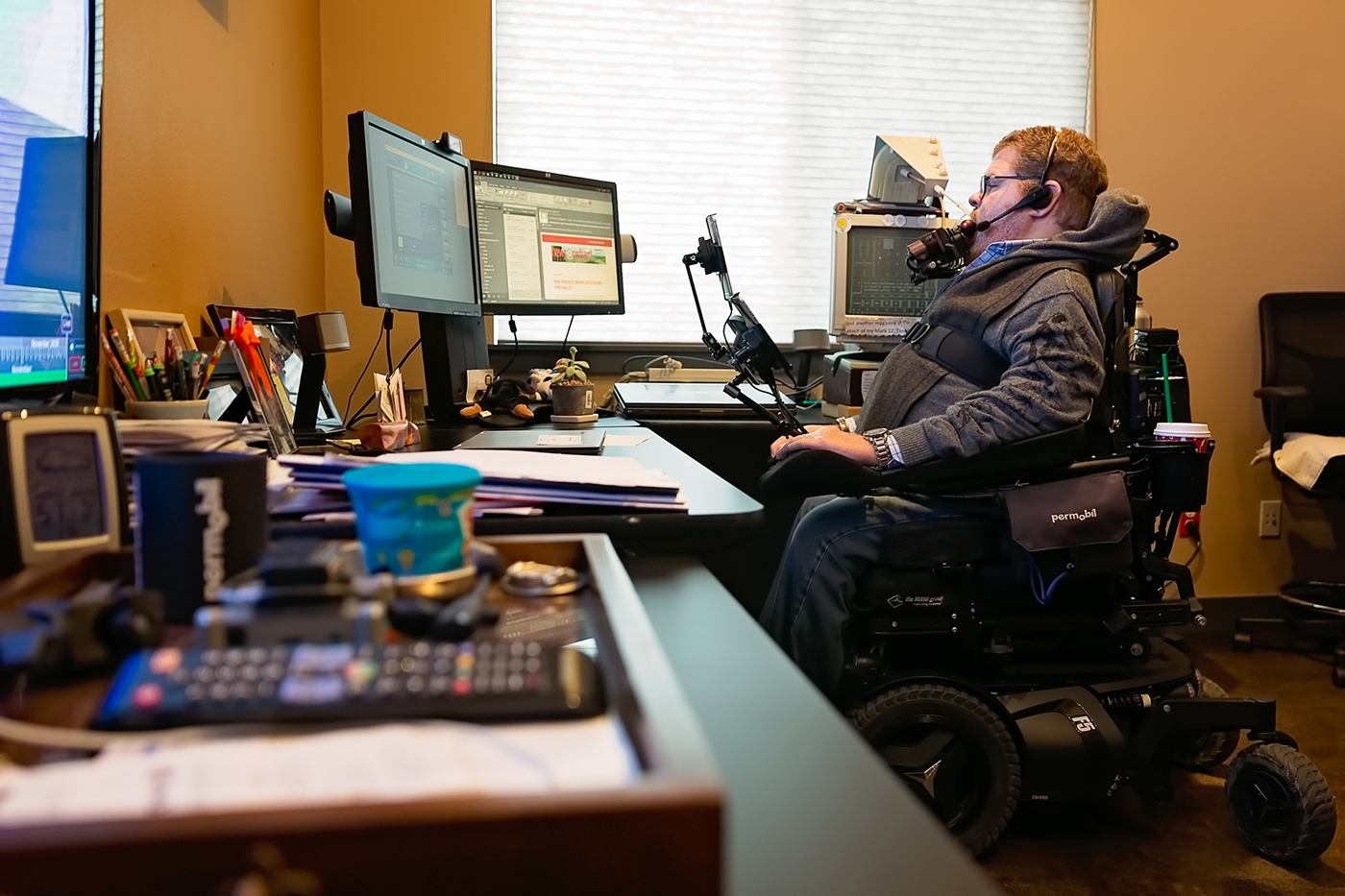Recently, I was in the middle of a conference call with one of my company’s business partners. It was a complex call dealing with a lot of nerd language — one of those meetings where I needed to be attentive and take notes. The perfect time for a little autonomic dysreflexia. You know that feeling … for me it’s a little bit of metal in the mouth, a little bit of tingling on the back of your head … its AD on its way.
I signaled for my nurse using switch control with my app to turn the call light on. When she came in, I put the phone on mute and told her I had dysreflexia and we’d have to find the source. Over the years, I’ve come up with all of these protocols for dysreflexia: Is it a kinked catheter or a kinked urine bag? Is there some sort of stoppage in the catheter preventing flow? Ninety percent of my AD stems from urinary-related issues, so that’s where I start.
After years of frustration with a condom catheter, I’ve had a suprapubic catheter system since 2008. I love it. I always begin checking things from the bottom. I tilt my chair back and work my way up, starting from my drainage bag and moving up the tube and catheter looking for kinks and blockages. Then I check the suprapubic site and make sure my clothes aren’t putting pressure on the tube or site. If none of those things resolves the AD, I’ll lie down, knowing my discomfort is probably stemming from something else.
Figure It Out and Get Back to Work
As my blood pressure was rising and my discomfort increasing, I just sort of chuckled. The clients on the call had no idea I was tilted back all the way in my wheelchair with one leg hanging off the footrest while my nurse carefully inspected my tube. I wasn’t able to write notes because I was tilted back all the way. I was trying to remember my clients’ needs and what we were talking about while intermittently muting my microphone to articulate my feelings to my nurse and give her direction. But on their end of the call, I was just Mr. Stabelfeldt, the very professional CEO of C4 Consulting.
Thankfully, in this case, the problem was with the tube and only took about 10 minutes to diagnose and resolve. It turned out the catheter was kinked at the stoma site. We fixed it and I got right back in the game. After about 15 minutes or so my blood pressure came down to normal.
It was one of those multi-layered mornings typical of quad life. Yes, I’m a businessman and I’m doing some pretty great work in the software world but, at the end of the day, I’m still a quadriplegic. I’ve been doing this for three decades, but never know what’s going to hit me. As my wife and I say: if you’re not working the machine, the machine’s working you. It’s pure gladiator shit.
** This post was originally published on https://www.newmobility.com/2020/10/when-dysreflexia-calls/


